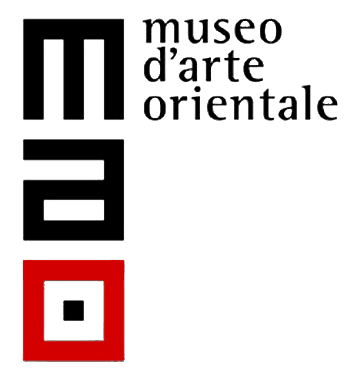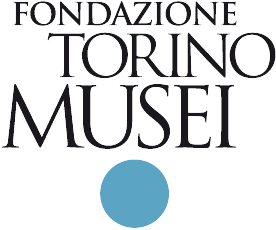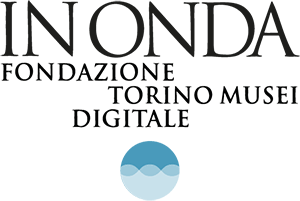A Collection without Boundaries
- Exhibition
- 3 November 2021 - 18 September 2022

- William Kentridge
- Tracey Moffatt
- Tony Cragg
- Tobias Rehberger
- Terence Koh
- Sean Scully
- Pedro Cabrita Reis
- Mona Marzouk
- Matt Collishaw
- Mark Dion
- Marina Abramović
- Marcos Lutyens
- Liam Gillick
- Laurent Grasso
- Kiki Smith
- Kcho
- Julião Sarmento
- Jim Lambie
- Jessica Stockholder
- Ilya and Emlia Kabakov
- Hermann Nitsch
- Hannah Starkey
- Georg Baselitz
- Cornelia Parker
- Christian Boltanski
- Chen Zhen
- Cecily Brown
- Carsten Höller
- Antony Gormley
- Anselm Kiefer
- Alfredo Jaar
- Aleksandra Mir
- Albert Oehlen
curated by Riccardo Passoni
GAM - Galleria Civica d’Arte Moderna e Contemporanea di Torino has renewed the installation of its permanent contemporary art collection with a new itinerary that presents 33 major artists on the global art scene.
A Collection without Boundaries was born from the desire to showcase an important selection of works from the Museum’s heritage by focusing on 56 works, many of which have not had, over the past years, the opportunity to be viewed by the public, if not for short periods of time. Over the years, the Museum has collected works of great importance, and all the works on display today refer to its history of recent acquisitions: they reached the Museum over the last twenty years through different channels, from selections made at Artissima, or through annual acquisitions, both made possible thanks to the decisive contribution of Fondazione per l'Arte Moderna e Contemporanea CRT, to works related to exhibition series, for example the cycle titled Avvistamenti in the early 2000s, as well as donations and targeted purchases.
“For Fondazione Arte CRT it is a great satisfaction to see on display within the exhibition A Collection without Boundaries an incredible 22 works from its historic collection. Thanks to the curatorial project fine-tuned by the Galleria d’Arte Moderna of Turin, visitors can admire works of absolute prestige, made by contemporary art masters like Marina Abramović, Anselm Kiefer, but also William Kentridge and Hermann Nitsch. A legacy in constant renewal that, in addition to testifying to the evolution of contemporary art, confirms how the acquisitions made over time thanks to Fondazione Arte CRT represent a safe investment, both in terms of culture and of the market. Events like this one demonstrate how the permanent collections are fundamental to guaranteeing a quality museum program and confirm how our collection continues to stand out as an absolute reference for contemporary international art,” states the President of Fondazione per l'Arte Moderna e Contemporanea CRT, Anna Ferrino.
The exhibition also offers an opportunity to show how the Museum followed over time a process of internationalization that successfully began right after World War II.
An eye and an interest for foreign art started in 1948 with the purchase of Dans mon pays by Marc Chagall at the Venice Biennale, and then was coherently followed at international events over the decades, as can be seen by the show Strangers. Tra informale e pop dalle collezioni GAM, held back in 2012.
After 10 years from this first event, today GAM presents A Collection without Boundaries with a totally new perspective: in the global dimension in which we now perceive our presence, through the circulation of information, works, and people, as well as the growth in number of opportunities for global travel and exhibitions, it has become difficult, if not outright impossible, to establish boundaries within which to operate regarding the internationalization of the collection.
If, previously, it was normal to open up to Parisian art, above all, and then American art, over the past 25 to 30 years GAM’s collection has been enriched with works by artists not only from Europe, but also from different cultures and expressive behaviors: from China, Cuba, Africa for example, now attracting global attention at major art events, like documenta and international Biennales and Triennales.
The artists in this collection selected for the event belong to different generations: from those born in the 1930s (Georg Baselitz, Christian Boltanski) to those born in the 1970s (Kcho, Hannah Starkey, Laurent Grasso).
As GAM director and exhibition curator Riccardo Passoni stated: We may verify that in the “anthology” we propose in this exhibition there are many stimuli we can identify as bearing certain research, without there being any specific geography or reference style. There are representations that evoke a story, finished or on hold (Marina Abramović, Hannah Starkey); tradition and care (Chen Zhen); surfacing of repressed ideas/feelings (William Kentridge, Tracey Moffatt); the drama of history and its scars, in an ideological dimension (Alfredo Jaar). And also: the emergence of a fairy-tale or legendary dimension (Marc Dion, Matt Collishaw), in contrast to a view of the unacceptable, the harsh need for memories (Christian Boltanski); or reclaiming certain spaces of the mind, of alienation (Ilya and Emilia Kabakov) or even forays into the paranormal (Marcos Lutyens, Laurent Grasso).
This exhibition not only aims to present some of the most significant international artworks acquired by the Museum, but cannot help but wonder about the future growth of our heritage, also and especially in relation to the spaces, with which today we measure ourselves against.
The artists on display: Marina Abramović (Belgrade, Serbia, 1946); Georg Baselitz (Kamenz, Germany, 1938); Christian Boltanski (Paris, France, 1944–2021); Cecily Brown (London, UK, 1969); Pedro Cabrita Reis (Lisbon, Portugal, 1956); Chen Zhen (Shanghai, China, 1955 – Paris, France, 2000); Matt Collishaw (Nottingham, UK, 1966); Tony Cragg (Liverpool, UK, 1949); Marc Dion (New Bedford, Massachusetts, US, 1961); Liam Gillick (Aylesbury, UK, 1964); Antony Gormley (London, UK, 1950); Laurent Grasso (Mulhouse, France, 1972); Carsten Höller (Brussels, Belgium, 1961); Alfredo Jaar (Santiago de Chile, Chile, 1956); Ilya and Emlia Kabakov (Dnepropetrovsk, URSS, now Ukraine, 1933 and 1945); Kcho (Nueva Gerona, Cuba, 1970); William Kentridge (Johannesburg, South Africa, 1955); Terence Koh (Beijing, China, 1967); Anselm Kiefer (Donaueschingen, Germany, 1945); Jim Lambie (Glasgow, UK, 1964); Marcos Lutyens (London, UK, 1964); Mona Marzouk (Alexandria, Egypt, 1968); Aleksandra Mir (Lubin, Poland, 1967); Tracey Moffatt (Brisbane, Australia, 1960); Hermann Nitsch (Vienna, Austria, 1938); Albert Oehlen (Krefeld, Germany, 1954); Cornelia Parker (Cheshire, UK, 1956); Tobias Rehberger (Esslingen, Germany, 1960); Julião Sarmento (Lisbon, Portugal, 1948–2021); Sean Scully (Dublin, Ireland, 1945); Kiki Smith (Nuremburg, Germany, 1954); Hannah Starkey (London, UK, 1971); Jessica Stockholder (Seattle, Washington, US, 1959).





